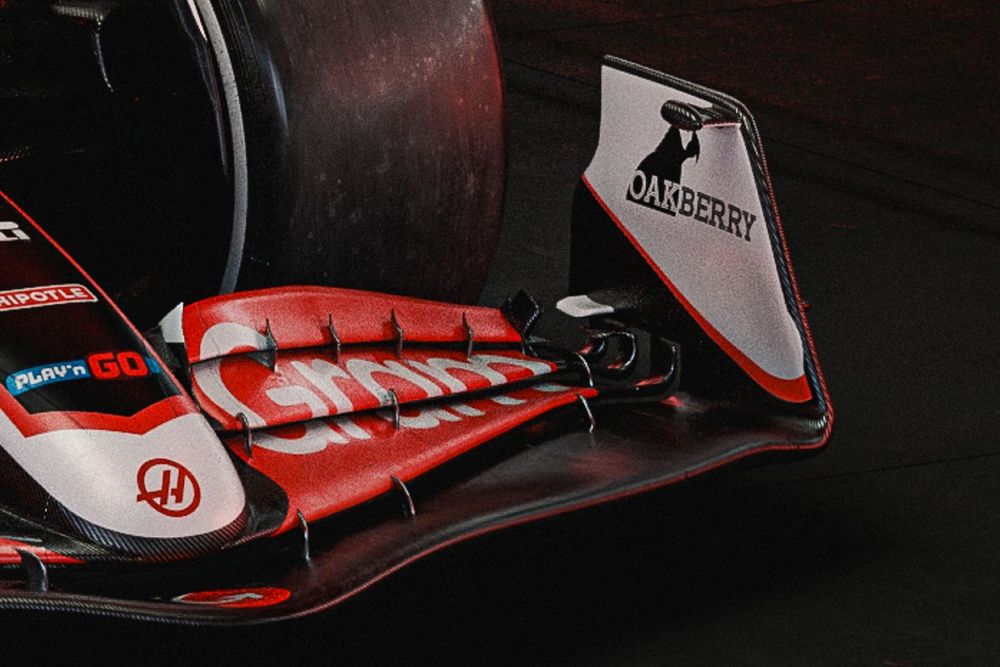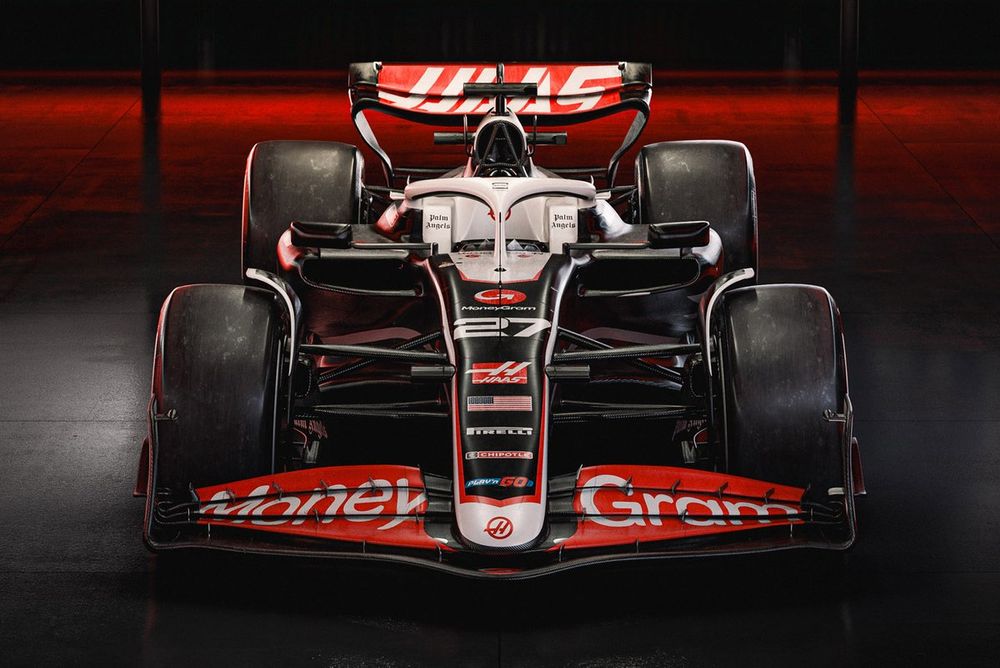The team is looking to build on the development trajectory that it pursued during 2023 and the most obvious alteration is the design of the sidepods.
This is a continuation of the development made by Haas at the United States Grand Prix last season. Its ability to fully commit to the downwash ramp-style sidepod solution was scuppered by the lower of the two Side Impact Spars (SIS) being located within the lower portion of the sidepod, whereas the other teams had housed theirs within the confines of the floor.
A large blister on the surface of the floor on the VF-24 confirms it has now taken that approach, which has allowed designers to not only expand the size of the undercut but also refine the position and shape of the inlet.
Notably, this now echoes the Red Bull RB19’s design, with an elongated lower lip used to define the airflow’s passage either into or around the sidepod inlet.
The upper surface of the sidepod is also smoother, as the team appears to have moved away from the shallow gully adaptation that the late-season update provided. A downward-facing cooling cannon also divides the sidepod and engine cover bodywork, with an outlet guided into the rear suspension and coke bottle region.
The engine cover features the now almost ubiquitous shelf-like extension that divides the two sections of bodywork and provides contours for the airflow to follow at the rear of the car.
Meanwhile, the extra-large cooling gills that were a feature of the update in 2023 have also been reduced in size, but there might be scope for some panels to be exchanged when temperatures exceed what this layout can resolve.
Haas VF-24 render
Photo by: Haas F1 Team
The upper section of the engine cover has also been widened, likely to accommodate any ancillaries that have been posted up above the power unit, which will also be cooled by the enlarged airbox layout.
The triangular roll hoop remains but is now an internal component within a more conventional conical airbox layout, with two inlets created on either side of the central inlet.
The airbox ears have also been retained but now sit much closer to the airbox, owing to its greater width.

Haas VF-24 Front Wing
Photo by: Haas F1 Team
At the front of the car, the team has retained the outwashing slot gap separator brackets between the upper two elements and the low rear quarter winglet that’s mounted on the endplate above the uppermost flap element.
But a new feature takes…
Click Here to Read the Full Original Article at Motorsport.com – Formula 1 – Stories…

